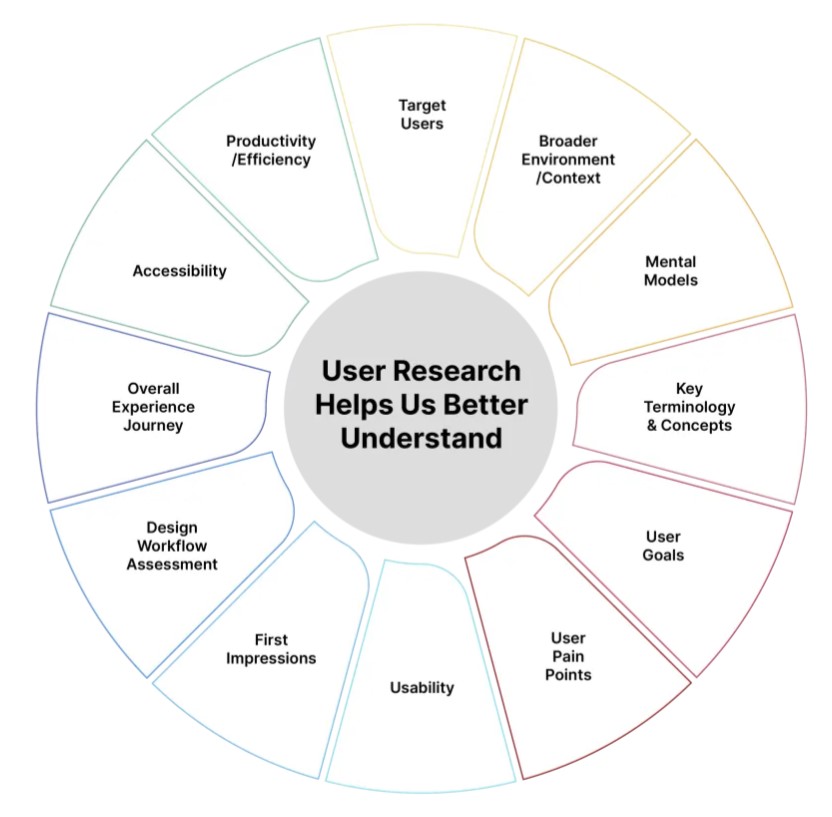As a UX designer with over two decades in the trenches, I’ve seen countless software projects veer off course.
Teams build features they think are brilliant, only to watch users struggle or abandon ship. The root cause?
Building for an abstraction instead of a human. That’s where personas transform the game. They’re not just “nice-to-have” UX fluff—they’re your strategic compass. Let me show you why.
What Exactly Is a Persona in Software Development?
A developer persona (or user persona) is a semi-fictional, research-backed archetype representing your core users. It synthesizes real data about their behaviors, goals, pain points, environments, and mental models into a relatable human profile. As Miller & Williams, Ltd. astutely notes:
“The personalization of a role via the persona psychologically creates a long-lasting impression on the development team comprising business analysts, managers, designers, testers, and so on.”
For example, “DevOps Dave” isn’t just a job title. He’s a 35-year-old SRE drowning in Kubernetes alerts, juggling on-call shifts, and desperate for automated solutions that reduce cognitive load. That specificity changes how your team designs.
The 6 Game-Changing Benefits of Personas (Backed by Experience)
1. User-Centric Design: From Assumptions to Empathy
Personas force teams to confront real user goals and mental models. Without them, design defaults to the HIPPO effect (Highest Paid Person’s Opinion). With personas, every feature debate resolves with: “Does this actually help DevOps Dave?”
Impact: Aligns UI patterns, navigation, and workflows with how users think.
Tool Tip: Use empathy mapping in Miro or FigJam to visualize user attitudes.
Reference: Nielsen Norman Group: Personas Make Users Memorable
2. Enhanced User Experience: Beyond Usability
Personas contextualize usability within the overall experience journey. You’re not just optimizing button clicks—you’re designing for Dave’s 3 AM panic when a server crashes.
Key Focus Areas:
Accessibility: Does Dave’s tool work with his screen reader after 12 hours on shift?
First Impressions: Can he find the critical “rollback” feature in <10 seconds during a crisis?
Reference: Interaction Design Foundation: The Role of Personas
3. Informed Decision-Making: Cutting Through Noise
When stakeholders demand pet features, personas provide objective guardrails. They anchor decisions in the broader environment/context of the user.
Example: Should we add a social feed to our CLI tool? Persona data shows Dave works in air-gapped networks—no.
Framework: Map personas against design workflow assessment matrices to prioritize features.
4. Efficient Development: Saving Time & Money
By clarifying user pain points early, personas prevent costly rework. Teams build right the first time.
Data Point: IBM found personas reduced development time by 33% by eliminating misaligned features.
Productivity Hack: Use personas in sprint planning to flag irrelevant user stories.
Reference: IBM Design Thinking Practices
5. Risk Mitigation: Avoiding the “Nobody Asked For This” Launch
Personas expose adoption risks before coding starts. If your persona can’t achieve their user goals with your solution, failure is imminent.
Red Flag Check: Does the persona’s key terminology & concepts match your UI labels? (e.g., “Container orchestration” vs. “Cloud magic”).
Tool: Validate with user research via Maze or UserTesting.com.
6. Continuous Improvement: Keeping Pace with Users
Personas evolve. Regular research updates ensure your software adapts to changing target users and environments.
Pro Tip: Treat personas as living docs in Notion or Airtable—revisit quarterly.
How to Create Personas That Don’t Suck: A 5-Step Blueprint
1: Conduct Research (The Foundation)
Methods:
User interviews (record with Otter.ai)
Surveys (Typeform, SurveyMonkey)
Analytics (Hotjar, Google Analytics)
Crucial Insight: Observe users in their broader environment—e.g., Slack communities like DevOpsChat or Stack Overflow threads.
Avoid: Making up demographics. Base everything on behavioral data.
2: Analyze Data for Audience Segmentation
Cluster findings by behavior patterns, not job titles. Example segments:
“The Firefighter” (reacts to outages)
“The Architect” (plans infrastructure)
Tool: Spreadsheet affinity mapping or Optimal Workshop’s Reframer.
3: Define the Persona’s Goals
Dig past surface-level wants:
Stated goal: “Faster deployments.”
Real goal: “Reduce deployment anxiety to see my kid’s soccer game.”
Frame goals as job stories: “When [situation], I want to [motivation], so I can [outcome].”
4: Understand Pain Points (The Goldmine)
Probe deeper than “it’s slow”:
Technical: “Scripts break between environments.”
Emotional: “I feel embarrassed when deployments fail publicly.”
Map pains to the overall experience journey—e.g., onboarding vs. daily use.
5: Create & Socialize the Persona
Give them life: A name, photo, quote (“Uptime is my love language”), and core traits.
Share relentlessly: Embed in Jira, Figma, Slack. Print posters for the team room.
Template: Xtensio’s Persona Creator or HubSpot’s Make My Persona.
Resource: Free Persona Template by UXPressia
Tools & Frameworks to Operationalize Personas
Research: UserInterviews.com, Dovetail
Collaboration: Miro, FigJam
Documentation: Notion, Confluence
Validation: UsabilityHub, UserBit
Frameworks:
Lean Persona Canvas (focus on goals/pains)
Proto-Personas (for early-stage hypothesis testing)
The Bottom Line
Personas turn nebulous “users” into humans your team cares about. They prevent you from building a Ferrari for someone who needs a forklift. When DevOps Dave’s face stares back from your design wall, you’re not coding for specs—you’re solving for a person.
In software, empathy isn’t soft—it’s strategic. Personas are how you bake it into your DNA.
Call to Action:
Start small. Interview one user this week. Sketch a proto-persona. Share it at your next stand-up. Watch how it changes the conversation.
Further Reading:
